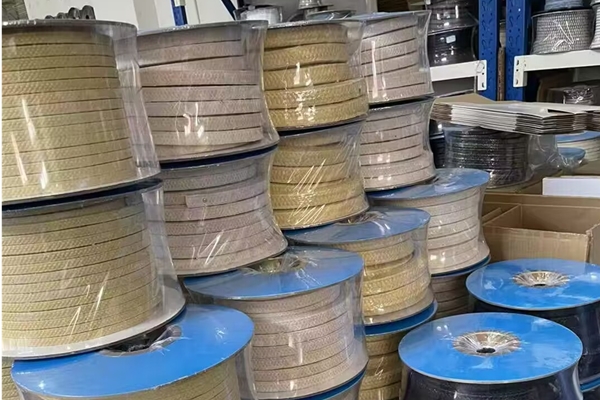Sealing Gland Packing and mechanical seals are two widely used sealing methods, each operating on distinct principles. Let’s see how they work and where they are typically applied.
How Sealing Gland Packing Works:
Labyrinth Effect:
The surface of the rotating shaft is never perfectly smooth at a microscopic level. When gland packing material comes into contact with the shaft, small gaps remain between them.
Pressurized fluid or gas moves through these tiny gaps and encounters resistance multiple times as it flows through this “labyrinth” of gaps. This resistance significantly reduces leakage, effectively sealing the system.
Bearing Effect:
A thin liquid film forms between the gland packing material and the rotating shaft, similar to the way a sliding bearing works. This film not only provides lubrication but also reduces friction and wear between the packing and the shaft, helping extend the seal’s service life.
How Mechanical Seals Work:
Relative Motion of Rotating and Stationary Faces:
Mechanical seals function based on the interaction between two critical components: the rotating face (attached to the shaft) and the stationary face (fixed in place). These faces are pressed together at a right angle to the shaft and are held in contact by fluid pressure, springs, or magnetic forces.
This tight contact prevents the fluid or gas from leaking along the shaft.
Auxiliary Seals:
In addition to the main sealing surfaces, mechanical seals often use auxiliary sealing elements like O-rings. These help enhance the sealing performance and ensure that even if there is slight leakage at the main seal, the overall system remains sealed.
Friction Pair:
The rotating and stationary faces form what is known as a friction pair. Pressure from the fluid or springs keeps the rotating face pressed against the stationary face. Although there is relative movement between the two surfaces, a thin fluid film forms between them, reducing friction and ensuring proper sealing. This film also helps to prevent excessive wear on the sealing surfaces.
Key Differences Between Sealing Gland Packing and Mechanical Seals:
Sealing Gland Packing relies on the labyrinth effect and a liquid film to reduce leakage. The gland packing material provides sealing through a combination of physical barriers and lubrication.
Mechanical Seals, on the other hand, depend on the precise contact between rotating and stationary faces, with a fluid film ensuring lubrication and minimal friction.
Applications:
Sealing Gland Packings are typically used in low-demand situations, such as in pumps and other simple machinery where the requirements for sealing are not too stringent. They are favored for their simplicity and low cost.
Mechanical Seals are used in more demanding industrial applications, especially where high pressure, high speed, or corrosive fluids are involved. They offer superior sealing performance and are preferred for environments requiring long-term, reliable operation.
So Sealing Gland Packings are advantageous for their ease of use and low cost, making them ideal for less critical applications. Mechanical seals, however, offer a higher level of sealing efficiency and longevity, making them essential for high-performance, high-precision industrial systems.




